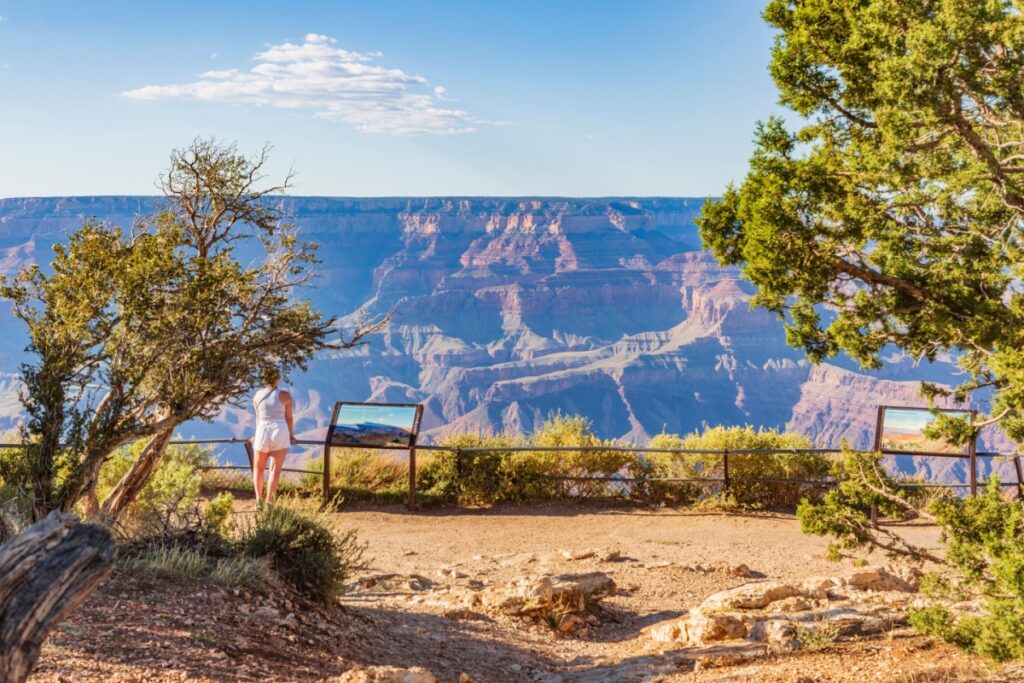In July 2025, a lightning strike ignited what became known as the Dragon Bravo Fire on the North Rim of Grand Canyon National Park. Over a matter of days, the blaze expanded dramatically, eventually consuming more than 227 square miles (589 square kilometers) and destroying over 113 structures, including the historic Grand Canyon Lodge
Wildfire Devastation and Subsequent Closures.
The National Park Service (NPS) initially adopted a “confine and contain” approach, but shifting winds and dry conditions allowed the fire to breach control lines rapidly by July 11–13. Authorities evacuated all park staff, concession personnel, and visitors from the North Rim. As the fire engulfed critical infrastructure—including the water treatment plant, visitor center, cabins, and lodge—the North Rim was closed for the remainder of the 2025 season.
Plans for Partial Reopening and Visitor Guidance
Starting October 1, 2025, select sections of the North Rim will reopen for daylight access. The reopened zones will include Highway 67 up to the Cape Royal Road (~mile marker 10), granting access to Point Imperial, Cape Royal, Fire Point, and Swamp Ridge. Trails such as the Ken Patrick Trail (from Point Imperial to Cape Royal), Cape Royal Trail, Cliff Spring Trail, Cape Final Trail, and Roosevelt Point Trail will also be accessible.
These areas will remain open from official sunrise to sunset through November 30, unless an early snowfall forces further closure. No overnight camping or use is permitted outside limited exceptions at Swamp Point and Fire Point. The majority of trails, such as the North Kaibab, Widforss, Transept, Arizona Trail, and the Uncle Jim Loop, will remain closed due to extensive damage, ongoing recovery, and safety hazards including unstable terrain, dead standing trees, and increased flash flood risk.
Visitors should prepare for complete self-sufficiency: there is no power, running water, fuel, or cell service in reopened sections, and emergency response capabilities will be severely limited. The NPS stresses that all necessary supplies must be brought in by visitors.
Recovery Efforts and Political Oversight
In the aftermath, the NPS has initiated a Burned Area Emergency Response (BAER) assessment to evaluate hazards, stabilize terrain, protect water quality, and plan for structural restoration. Beginning August 21, 2025, interagency teams began methodical surveys to guide longer term recovery and stabilization of historic structures.
The fire’s management has drawn scrutiny from Arizona officials, including Governor Katie Hobbs, who has called for an independent inquiry into the handling of the blaze. U.S. Interior Secretary Doug Burgum has reportedly agreed to facilitate a review. Meanwhile, allegations have surfaced that early warning thresholds, such as humidity, wind gusts, and fuel dryness, were misjudged and that delays in suppression allowed the fire to escalate.
Thanks in part to mandatory evacuations, there were no reported fatalities tied directly to the fire. The blaze is now considered one of 2025’s most damaging wildfires, and among the largest in Arizona’s history.
As restoration and safety monitoring continue, the seasonal reopening is intended to allow limited public access while acknowledging that most of the North Rim will remain off-limits for the time being.


